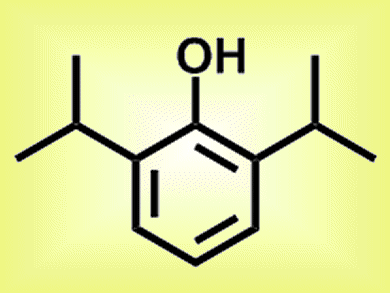Propofol, the most used intravenous general anesthetic (pictured), targets the receptors for γ-amminobutyric acid (GABA), an endogenous chemical that inhibits the transmission of nerve signals. Propofol’s exact mechanism of action, however, has not been fully elucidated because it is still unknown how this drug binds to its target receptors.
Grace Yip, Imperial College, London, UK, and colleagues clarified this issue by using a multistep approach. First, the researchers synthesized protiated and deuterated versions of ortho-propofol diazine, a propofol analogue bearing a trifluoromethyl diazirine moiety. This group is photoreactive, and upon light activation it induced the formation of an irreversible covalent binding between the drug analogue and the GABAA receptors. Subsequently, using mass spectrometry, the scientists identified the specific amino acids of the receptor that were engaged in this binding. By doing so, they discovered that propofol binds to GABAA receptors in a cavity located near the interface between the transmembrane region and the extracellular ligand binding domain.
These novel findings might help the development of new anesthetics with fewer side effects.
- A propofol binding site on mammalian GABAA receptors identified by photolabeling,
Grace M S Yip, Zi-Wei Chen, Christopher J Edge, Edward H Smith, Robert Dickinson, Erhard Hohenester, R Reid Townsend, Karoline Fuchs, Werner Sieghart, Alex S Evers, Nicholas P Franks,
Nat. Chem. Biol. 2013.
DOI: 10.1038/nchembio.1340



